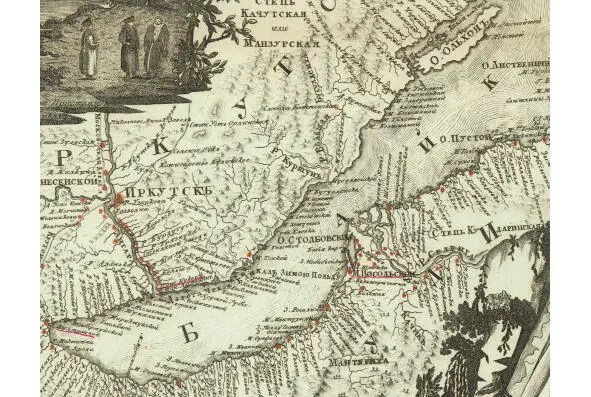
Map of Lake Baikal before 1862
Thirdly, on the walls of the temple you can see the most interesting ornaments that gravitate towards the traditions of Buddhism and even paganism. In addition, the Epiphany Cathedral is one of three churches in Siberia, where you can find glazed tiles with images of Slavic mythology: basilisks, unicorns, centaurs and even the famous bird Gamayun.
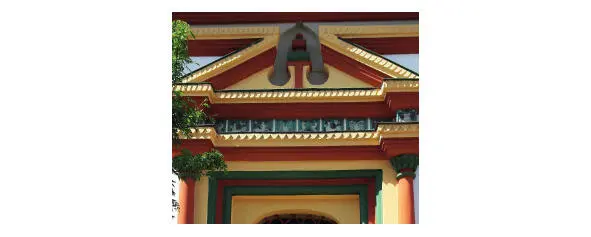
Tiles at the Epiphany Cathedral
The church suffered very seriously from the activities of the Irkutsk bakery, which had been located here since 1934. Therefore, in 1967—1985, during the restoration of the church by the Moscow architect G.G. Oranskaya, it was decided to remove the most damaged later layers, dismantle the bell tower and return the monument to its original appearance. At the same time, began restoration of the paintings, which continues to this day.
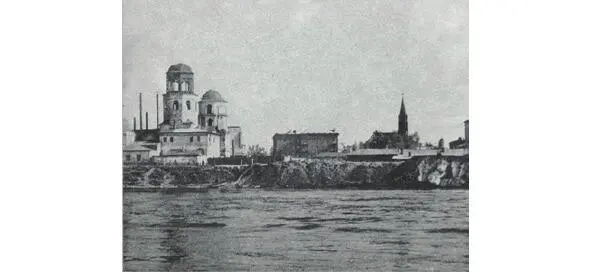
Before restoration of the Cathedral
Opposite the cathedral, you can see busts of the most famous saints of the city of Irkutsk, because ten holy men blessed this land with their steps: Righteous Elder Gerasim of Irkutsk, St. Innocent Kulchitsky, St. Sinesy Ivanov, St. Sophronius Crystalevskiy, St. Innocent Veniaminov, St. Meletius of Kharkov, St. Gerasim Dobroserdov, St. Meletius Yakimov, Holy Martyrs Bishops Parthenius and Ephraim.
Today, there are only three sculptures here, but every year a new monuments appear, starting in 2017, when it was 220th anniversary of the birth and 40th anniversary of the canonization of “Apostle of Siberia and America” Saint Innocent of Moscow. In 2018, on the 100th anniversary of the glorification, a bust of St. Sophronius Crystalevskiy appeared, and a year later, on the 215th anniversary of the canonization – the image of St. Innocent of Irkutsk. I would like to believe that this will become a good tradition.
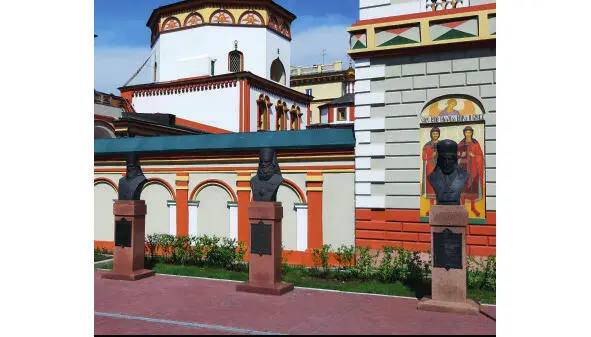
Busts to Saints of Irkutsk
We will continue driving along the downer embankment of the Angara River. On the way, we will meet a monument to the teacher by the sculptor I.E. Stavsky, which appeared here in 2016 directly opposite the building of the Pedagogical Institute of Irkutsk State University (ISU). The faculties of this educational institute occupying many old buildings in the city. For example, this faculty received for use the building of Old Irkutsk Theological Seminary, built in 1790, where graduated such people as St. Innocent Veniaminov and St. Gerasim Dobroserdov. In the past, this entire quarter was covered by a huge Bishop’s Courtyard, on the site of which several residential houses and buildings of the Irkutsk bakery factory were built in Soviet times.
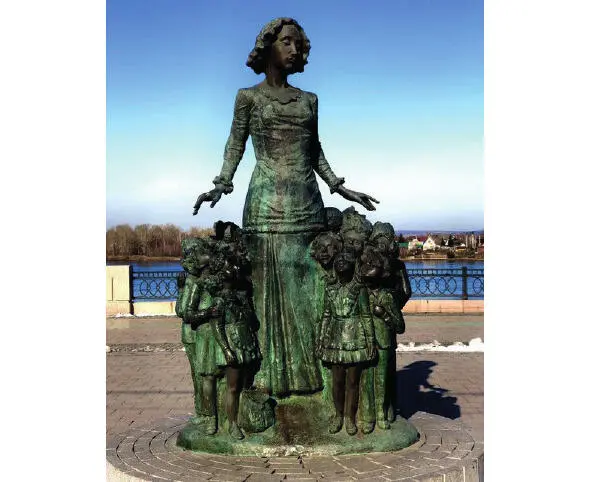
Monument to the teacher
From time immemorial and up to the end of the 19th century, two ferries operated on this part of the Angara embankment, which in fact connected Irkutsk with the rest of Russia, as soon as there was no other way to the East. Since 1731 at this point ended the longest road on Earth of that era – Moscow Tract (5672 km). Further from Irkutsk started the tracts to Okhotsk on Pacific Ocean (3988 km) and to Beijing (3216 km).
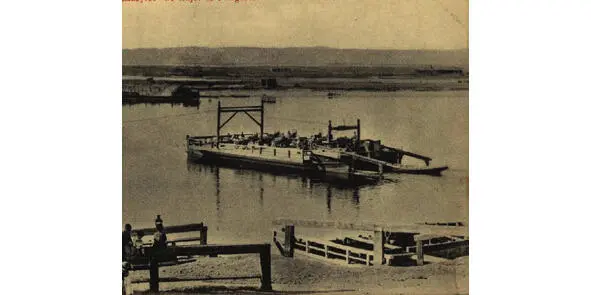
Moscow scow
In memory of this and on the occasion of the celebration of the tenth anniversary of the reign of Russian tsar Alexander I in 1811, a triumphal gate was laid here. Although the authorship of this amazing construction for the province is attributed to the provincial architect J.A. Kruglikov, but he could hardly have guessed such an interesting decision himself.
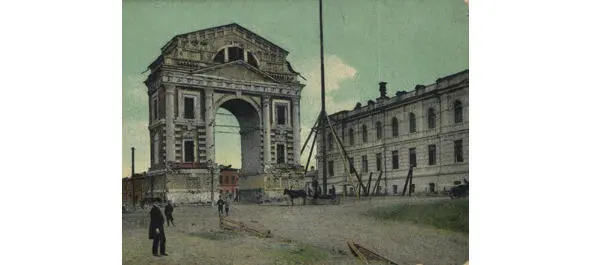
Moscow Triumphal Gate
And, in fact, the gate was built by the French road engineers P.D. Bazaine, J. А. Fabre, C.M. Potier, A.M. Destrem, who were exiled to Irkutsk. They could hardly suspect that they had begun construction of the symbol of great victory of the Russian army over Napoleon in the Great Patriotic War of 1812—1814. After all, it was through this triumphal arch that the first Irkutsk veterans returned home, and the Moscow Gate became the first attraction that met travellers at the entrance to city.
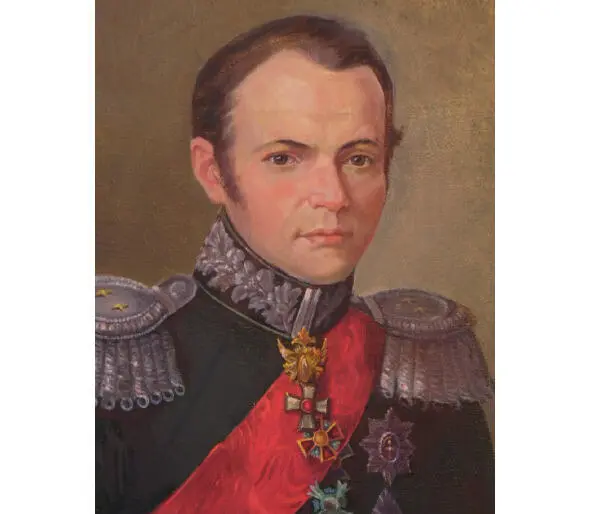
P. D. Bazaine
It remained the only triumphal arch in Russia beyond the Urals until gate were dismantled due to disrepair in 1928. There is a memorial sign at its place today. Nearby in 2011, at the expense of Irkutsk businessman E.G. Devochkin, the new Moscow Gate was reconstructed.
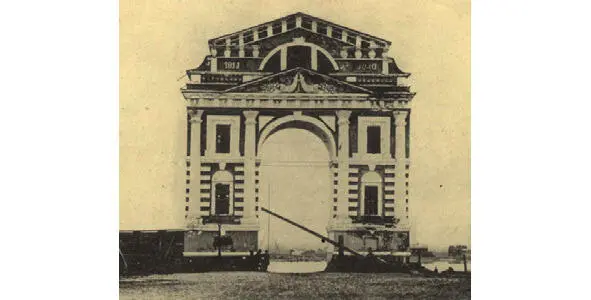
Moscow Triumphal Gate
If we recall the origins of the military glory of Irkutsk, then in 1786 the Irkutsk Dragoon Regiment was created, which became the first military unit in the history of the capital of Eastern Siberia. Its most famous general was A.A. Skalon, which died a heroic death in the battle for Smolensk on August 5, 1812.

General A.A. Skalon
At first there was a very cautious attitude towards the Siberian troops and they were always kept in reserve. However, due to the fact that most of the battles of the Napoleonic wars took place on the brink of defeat, and they had to use reserve units, Siberians more and more began to declare themselves. On February 8, 1807, the invincible army of Napoleon in the Battle of Preussisch-Eylau suffered its first defeat, largely thanks to the Irkutsk Dragoon Regiment. Later, in the decisive battle in Russia near Borodino, the Irkutsk dragoons repulsed the last attack of the French cavalry at 3 o’clock in the afternoon, and the battle ended there.
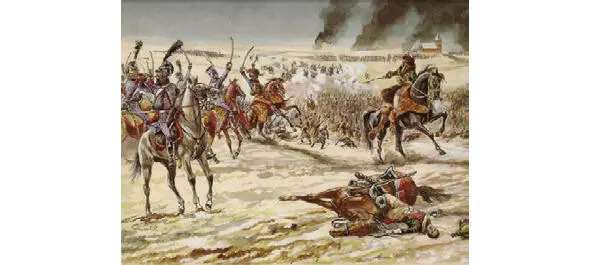
Irkutsk Dragoon Regiment
From January 1813 the regiment was reorganized into the Irkutsk Hussar, and its forces were used in the personal protection of Russian Marshal M.I. Kutuzov, and during the “hundred days” of Napoleon, it was transferred to France, where it worthily completed the era of the Napoleonic wars. Due to the fact that the Irkutsk regiment was united with the Moscow one, many noble sons served in it, such as the poet and diplomat A.S. Griboyedov, composer A.A. Alyabyev, architect of the “new Moscow” J.I. Bové.
Читать дальше























